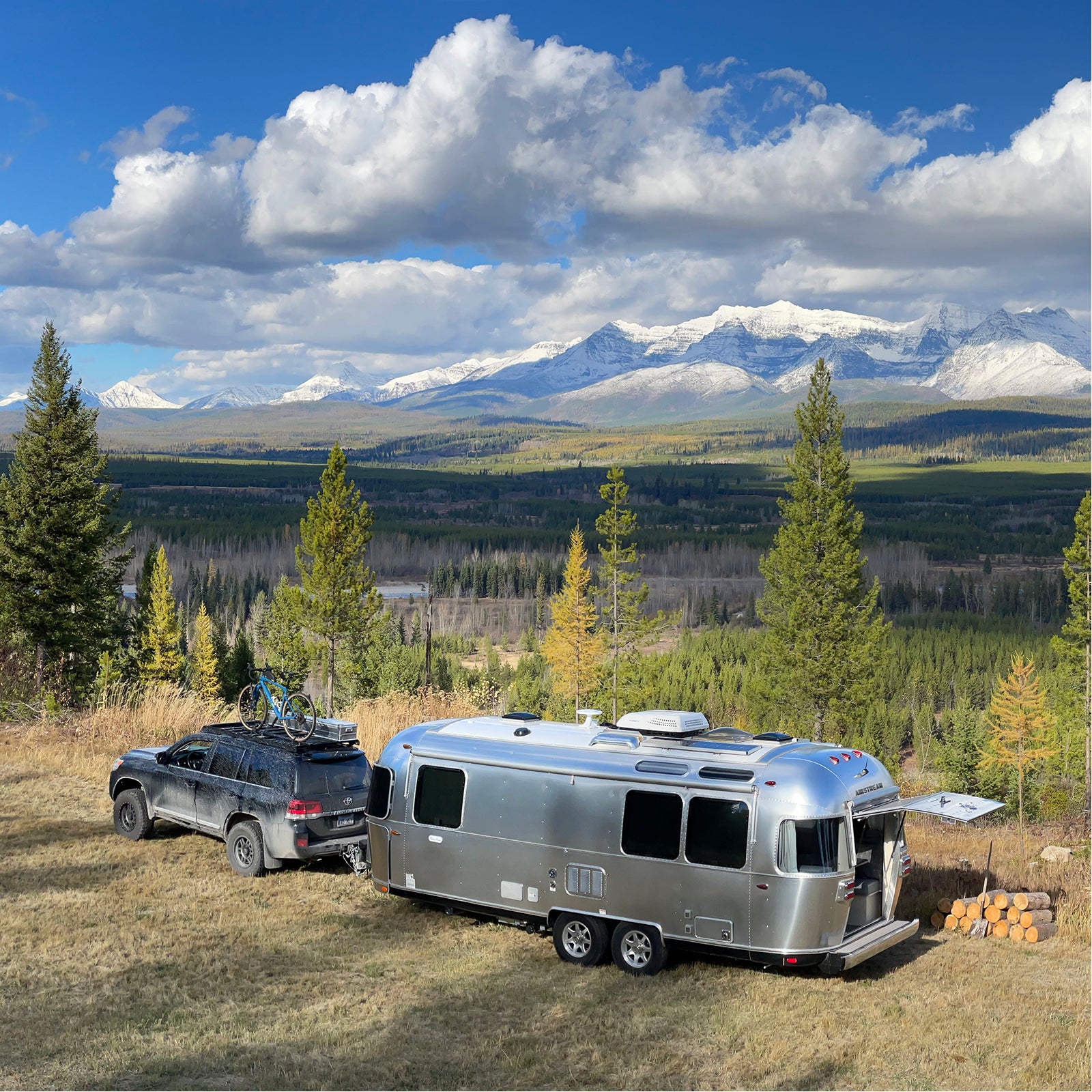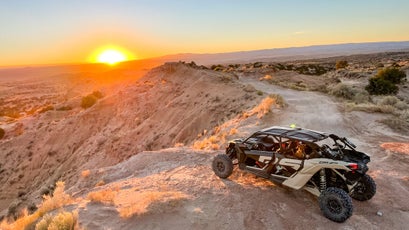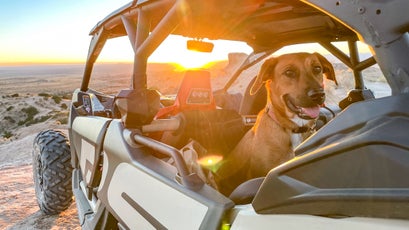IÔÇÖve been reviewing iPhone cameras for five years now. I start every article by saying that╠řalthough the iPhone canÔÇÖt match the chops of a pro-level camera like the , IÔÇÖm still widely impressed by╠řthe photos that are shot with these portable devices that fit in our pockets. The same is once again true for the new , which was just announced on October 13.╠ř
Thanks to a few hardware improvements, matched with AppleÔÇÖs increasingly clever software upgrades, the 12 Pro takes awfully nice photos and portraits during the day and solid snaps at night. IÔÇÖve been testing the phone for about a week and╠řtalking to outdoor photographer , who tried out╠řhis 12 Pro in MontanaÔÇÖs Glacier National Park. HereÔÇÖs what we think are the cameraÔÇÖs most exciting new features.
Damn Good HDR
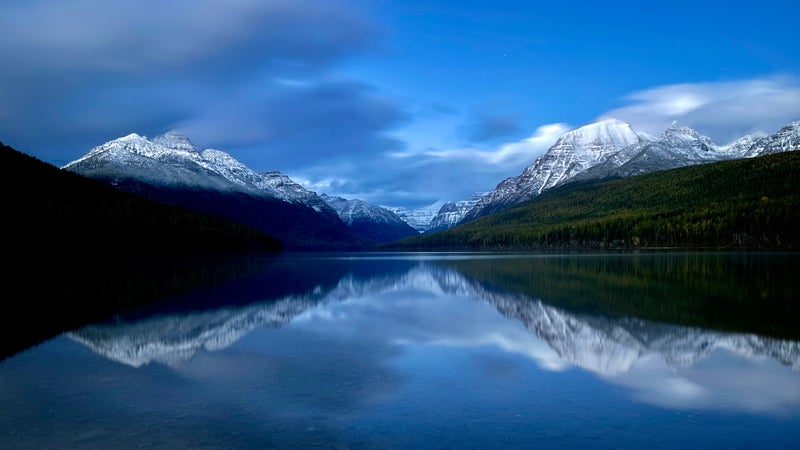
For people who like to shoot outside, the most important update on the iPhone 12 Pro is a technology called .╠řHDR stands for high dynamic range. ItÔÇÖs a bracketing feature that allows the╠řcamera to take multiple picturesÔÇösome that expose for the highlights, some that expose for the shadows, and some that expose right in the middleÔÇöto get╠řan even-toned photo╠řthat wouldnÔÇÖt be possible otherwise. Some older HDR software was awful and made images look manipulated. AppleÔÇÖs, however, is on point. The iPhone 11 Pro uses Smart HDR, but the 12ÔÇÖs version is a big step above that╠řand, as a result,╠řabsolutely nails outdoor exposures.
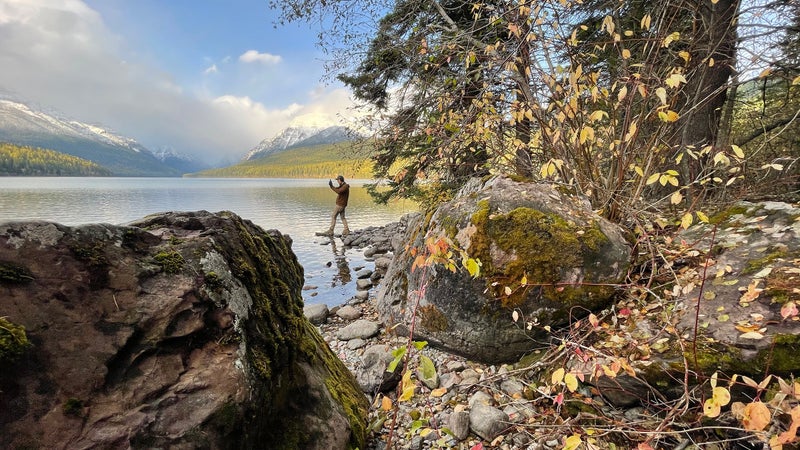
More specifically, Apple says HDR 3 uses machine learning to train the neural engine, a component on its╠řA14 Bionic chip. By showing the engine different scenes over and overÔÇöthose of mountains, clouds, snow, etc.ÔÇöit starts to recognize╠řspecific scenes and then╠řautomatically create the right exposure for each one. Put another way, you can now shoot a photo of a bright blue sky against a more shaded forest and the 12 Pro will know how to expose for both the sky and the forest.╠řIt ensures╠řa balanced image right out of the camera with no need for toning.
Apple also uses something called Deep Fusion for the details. Instead of just shooting bracketed photos and then combining them as is, the company╠řreports that╠řDeep Fusion prompts the neural engine to select ÔÇťthe best parts of each pixel for the best sharpness, color, highlights, and shadows,ÔÇŁ before telling the engine to fuse those pixels together into the final photograph.╠ř
ThatÔÇÖs a pretty heady explanation, but the results speak for themselves. Both Mann╠řand I have tested the HDR features over the past week, and weÔÇÖve been impressed. His landscape photos of dark forests in Glacier have tons of detail, while╠řbright clouds are never blown out. I shot photos right at sunset here in New Mexico and was impressed with how the phone captured plenty of information in the foreground shadows while still allowing for a bright, brilliant sun.
Better Low-Light Photos
Most pro-level mirrorless cameras, like the Sony a7R IV, have giant digital sensors that drink in a lot of light. A similarly sized sensor isnÔÇÖt possibleÔÇöyetÔÇöon something like an iPhone╠řdue to╠řspace limitations. This means that iPhones, and all smartphones, have smaller sensors that function╠řfairly well during the day when thereÔÇÖs plenty of sunshine╠řbut struggle at night.
As a smart-software workaround, Apple introduced something it╠řcalls╠řnight mode last year. Night mode is another bracketing feature;╠řwhen the iPhone camera senses a low-light situation, it╠řautomatically takes multiple photos╠řin a rowÔÇöincluding several longer exposuresÔÇöand combines them for brighter, crisper,╠řless grainy, and more color-accurate images╠řthat punch well above the small sensorÔÇÖs weight.╠ř
Night mode was only available on the 11 ProÔÇÖs 26-millimeter wide-angle camera, but this year it comes to the 12 ProÔÇÖs 13-millimeter ultrawide cameras as well, meaning you can now get much better low-light, wide-angle photos. Mann╠řsays the difference is immediately noticeable.
ÔÇťI found that the ultrawide lens with night mode on the iPhone 12 Pro captured a beautiful image, where the ultrawide without night mode on the iPhone 11 Pro rendered a mostly black frame full of noise,ÔÇŁ he says.╠ř
Better Low-Light Focusing
Phones and pro cameras alike can struggle to focus at night. To work╠řaround this problem, Apple is using a technology called lidar (short for light detection and ranging)╠řin the iPhone 12 ProÔÇÖs 26-millimeter wide-angle and 52-millimeter telephoto lenses. According to Apple, its lidar╠řscanner ÔÇťmeasures absolute depth by timing how long it takes invisible light beams to travel from the transmitter to objects, then back to the receiver.ÔÇŁ Simply put, this technology allows the camera to lock its focus on a subject easier and quicker in low-light situations.╠ř
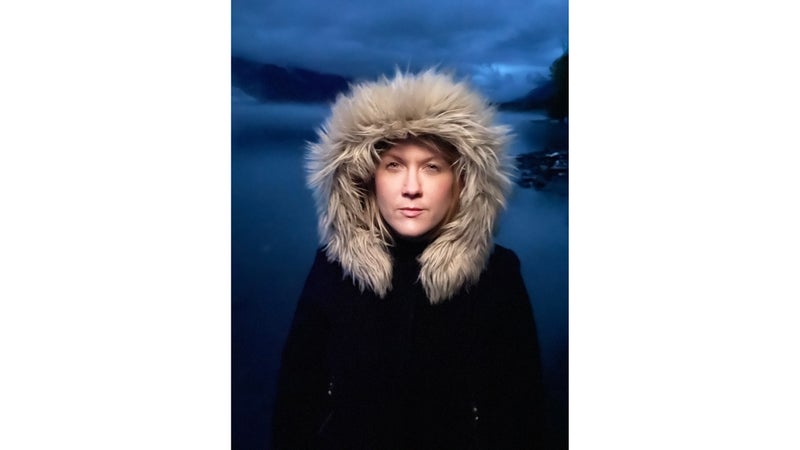
No camera is going to be perfect at focusing in really low light, even with lidar, but both Mann╠řand I found the update to be helpful. ÔÇťUp until now, one of the most frustrating aspects of shooting with an iPhoneÔÇöor any cameraÔÇöin low light was trying to lock in tack-sharp focus,ÔÇŁ Mann╠řtold me. ÔÇťIt drives me nuts when my subject is right where I want them in the frame, and my camera autofocus just keeps searching for a focus point instead of letting me trigger the shutter. With lidar╠řI didnÔÇÖt have that experience at all, and I found that the iPhone 12 Pro could focus in even the most challenging lighting conditions. IÔÇÖm hoping traditional camera manufacturers will integrate this technology, too.ÔÇŁ
Thanks to the╠řlidar╠řfeature, the 26-millimeter lens can now also shoot low-light photos in portrait mode. Mann╠řand I both tested the feature, and itÔÇÖs definitely nice to capture shots╠řin lower-light situations that can add contrast and mood.
Important Hardware Upgrades
So far╠řweÔÇÖve discussed what Apple calls upgrades to ÔÇťcomputational photographyÔÇŁÔÇöthe brandÔÇÖs term for all the software tricks that can be employed╠řto make better photos. But the camera still has to perform the basic function of capturing light through the lens and trapping that light on a sensor. If you want better photos, this hardware has to be upgraded, too.
The 12 Pro still has a 12-megapixel sensor but gets a wide-angle 26-millimeter lens that goes from an f/1.8 to an f/1.6 aperture╠řfor a 27 percent increase. That lens also gets a new╠řseven-element build to ensure that the images are sharp from edge to edge. One aperture stop isnÔÇÖt a huge upgrade, but I applaud Apple for continuing to develop its╠řhardware instead of just relying on new software.
Where hardware upgrades will make a big difference, I suspect, is in the 12 Pro Max, which launches in November. The 26-millimeter wide-angle lens on that╠řcamera gets a 47 percent bigger stabilized sensor as well as larger pixels. Apple says that the combined hardware (the sensor, the stabilizer, and the pixels) create an 87 percent jump in low-light performance. The 12 Pro Max will have a╠ř65-millimeter zoom lens, compared to the 52-millimeter zoom lens on the 12 Pro. IÔÇÖm excited about this feature as well, because a longer lens will help shoot even better portraits, with or without portrait mode.
Other Things You Should Know
In addition to better photos, the 12 Pro also shoots better video, with improved color and low-light capabilities. But, as always, I think most people will instead turn to a GoPro or video camera if they want to shoot anything longer than a quick clip for Instagram.
I was impressed with the new design of the 12 Pro. The square╠řshape╠řis much easier to hold, and I think itÔÇÖll result in far╠řfewer drops compared with╠řthe 11 Pro and its slick, rounded-off edges. The 6.1-inch display is just slightly bigger than the 11 ProÔÇÖs 5.8-inch display, but it makes a difference. That little bit of extra screen makes viewing photos better, and the phone feels perfectly sized for one-handed control. In terms of toughness, Apple says the 12 Pro is an upgrade from the 11 Pro. IÔÇÖve dropped my 11 Pro way too many times and never had a problem, so I suspect the 12 will do even better if it falls out of your pack while mountain biking or if it hits the pavement during a run.
Should You Upgrade?
My professional-photographer friends will tell you absolutely not. The 12 Pro upgrades are mostly software, and╠řthe phone starts at╠ř$1,000. If you really want to shoot high-quality photos that you can hang on your wall or pitch to magazines, they suggest you╠řsave that money╠řand put it toward╠řa pro-level mirrorless camera and an accompanying lensÔÇöand I agree.
If, however, an iPhone will be your main camera, and╠řyou love the portability of something that fits in your pocket, and youÔÇÖre mostly using your photos for social media or to share with friends, then you canÔÇÖt go wrong with the 12 Pro. What I would suggest, though, is that you wait until the 12 Pro Max launches before purchasing it. At just $100 more than the regular 12 Pro, the MaxÔÇÖs larger sensor and longer lens should create photos that are worth the extra money.


